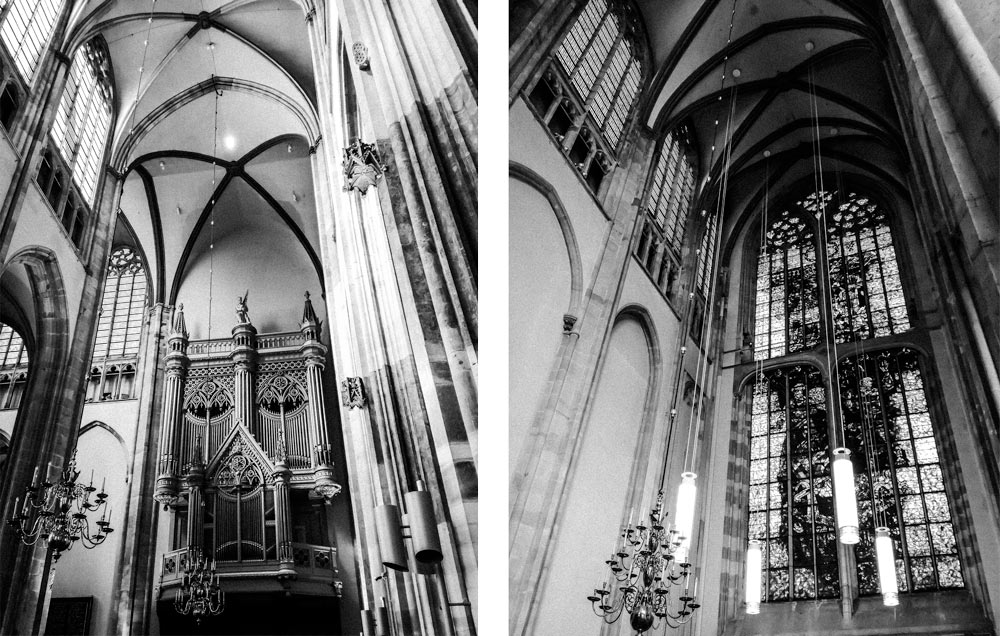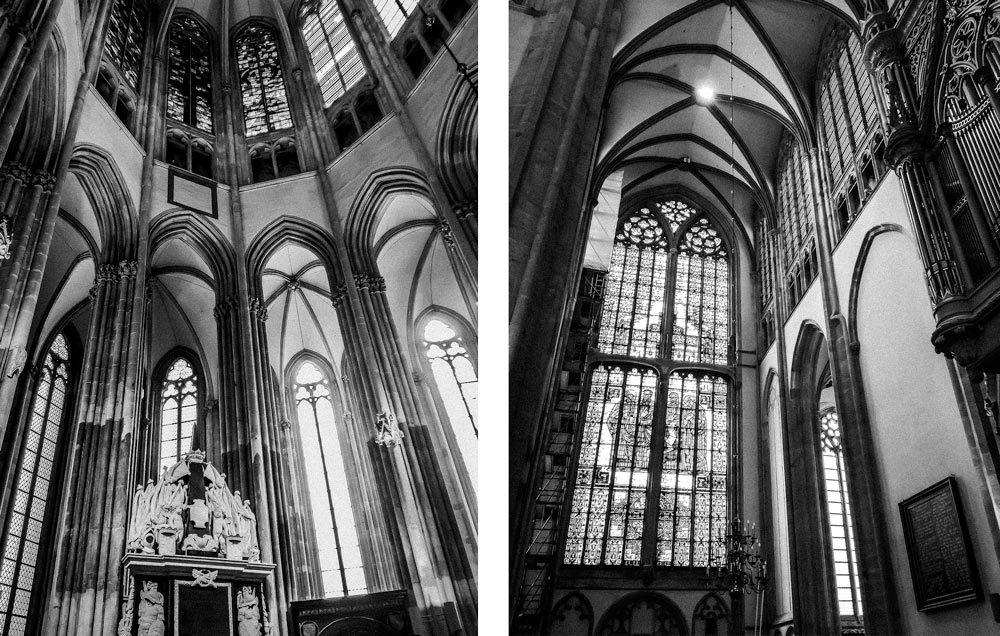Domkerk was originally Dom Church, or St. Martin’s Cathedral, which people finished in 1382. Today, the place consists of Domkerk and Dom Tower; both are the main dominants you can see from a distance when you enter the city.
History
Domkerk is a medieval cathedral built in the French Gothic architectural style, which was uncommon then. Before it, there used to be a Romanesque church. Throughout history, Domkerk functioned as the most important church in the Bishopric of Utrecht. People used it for significant religious ceremonies, while bishops and clergy used it for living. In 1580, Protestants took it into their hands, and as a result, many unique Catholic details and statues were removed or hidden.
The church was supposed to be a massive structure, but there was not enough money to make it happen, resulting in limited expansion. What is even worse, in 1674, there was a massive storm and tornado in Utrecht. The church didn’t make it whole. The weather conditions separated the tower from the nave. Both sections were never properly connected again, although, in the summer of 2004, some people decided to build a fake nave from the scaffolding to pinpoint the missing link. After the separation, the remaining missing space remained an open space, now known as Domplein.
Dom Tower is 112 meters high and originally was the church bell tower. One of the largest bells weighs 8200 kg. On a nice sunny day, you can climb the 465 steps and see Amsterdam and Rotterdam in the distance. There is a separate visitor center in the square stocked with souvenirs.

Radio DOM
What is more surprising about the tower is that Radio DOM operated inside from June to October 1999. It used to broadcast an audio soundscape that resembled field recordings—the sound was based on the sound the city was producing. To get the sound in, they used six computer-controlled surveillance mics and put them at the height of 80 meters of the tower. Then, the signals transformed into soundscapes, and in such shape, an FM radio transmitter broadcasted them for 24 hours.
Architectural Highlights
Although part of the nave is missing, the church still feels very spacious and open, with light coming inside through large stained-glass windows.
Domkerk’s interior has impressive Gothic vaulted ceilings, one of its defining features doing the supporting work. Ribbed vaulting adds depth and some elegance to it. One of the main hallmarks of the Gothic style is the pointed arches. Compared to Romanesque, the difference is that they have higher ceilings and more windows. Flying buttresses outside the structure help to preserve stability.
Those large windows are made of stained glass and depict scenes from biblical stories, the lives of saints, or religious symbols.
When you are inside, remember to look at the wooden choir stalls. The clergy used them during services. They feature intricate details such as carvings of biblical scenes or ornate patterns.
Pulpits are important elements for delivering sermons, and they have similar decorations as the wooden choir stalls. There are several altars, and each one serves its own focus. Some altars are for saints, some for memorials, etc.
Besides the magnificent pipe organ, the tombs are also worth noticing. The most prominent one belongs to Adrian VI, the former Dutch pope.

Visiting Domkerk
Domkerk is open to the public all year long. Admission is free, but you can contribute with small donations if you want. Opening hours during summer from April to November are from 10 AM to 5 PM during the week, from 10 AM to 3.15 PM on Saturday, and from 12.30 PM to 5 PM on Sunday. During the winter, from November to April, it opens one hour late and closes one hour earlier. On Saturday, it is open from 11 AM to 3.15 PM and on Sunday from 12.30 PM to 4 PM. For some additional information, check out Domkerk’s official site.
For more ways to explore Utrecht, check out Budget-Friendly Utrecht: The Best Free Experiences in the City or visit Castle De Haar, the Netherlands’ most enchanting fairytale fortress.
Sources:
domkerk.nl